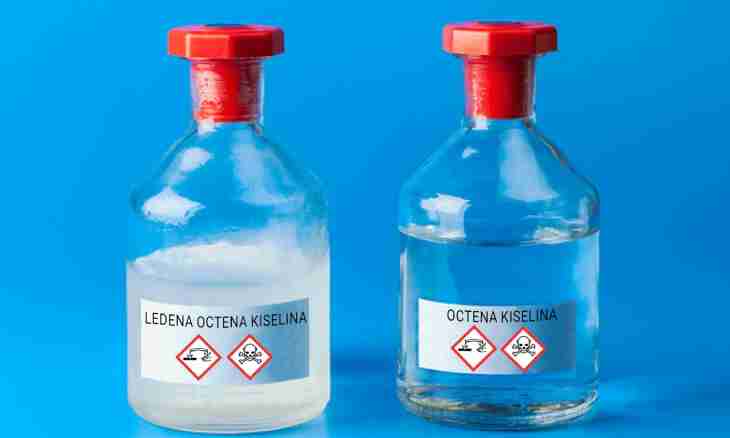Oleic acid is the most widespread in the nature among nonlimiting acids. It is a part of vegetable oils and animal fats. Its chemical properties and also a receiving method in the industry are interesting.
Main properties
Oleic acid has chemical properties of carbonic acids and olefins. It forms derivatives on carboxyl group, and at saturation passes with hydrogen into stearin acid. On chemical properties it is carried to group monounsaturated an omega-9 of fatty acids.
Under the influence of strong oxidizers, for example ozone or permanganate of potassium, mix of pelargonovy and azelaic acids is formed. This chemical property is used for their industrial receiving. Cis- and trans-isomerization takes place in presence of various catalysts, such as selenium, aliphatic nitriles, oxides of sulfur and nitrogen. These processes are reversible, and equilibrium mix contains about 75-80% of elaidinovy acid. Air of oleic acid and its salt is called oleates. Oleic acid is dissolved in benzene, chloroform and ethanol.
Oleic acid in the nature
In a human body and animals oleic acid is formed at dehydrogenation of stearin acid, and in microorganisms — when lengthening a chain of nonsaturated fatty acids. Its presence at animal fat prevents its peroxide oxidation. It is a part of vegetable oils and animal fats, sunflower oil contains about 40% of oleic acid, in olive — up to 81%, in almond — up to 85%, in peanut — 66%, in pork fat — up to 45%, and in beef — up to 42%.
Receiving
In the industry oleic acid is received hydrolysis of fats and vegetable oils. At first carry out fractionation of the formed mix of fatty acids, then start repeated crystallization from acetone or methanol at a temperature - 40 wasps. Technical oleic acid is called red oil, it represents almost transparent pastelike or liquid product stiffening at a temperature from +10 to +34os. Its color varies from light yellow to brown. As a rule, red oil contains impurity of saturated and nonsaturated fatty acids. In some of its grades there can be about 15% of naphthenic acid.
Application
Oleic acid and its air are added by production of paints and varnishes as softener. Its salts are the emulsifying agent and one of the main components of soap, also it is widely used as the emolent. Small amounts of substance can be present at pharmaceutical medicines. Oleic acid is applied as emulsifier and the stabilizer of invert emulsions in drilling muds on an oil basis, when processing stainless steels and alloys and also as the solyubilizuyushchy agent and emulsifier in aerosols.

